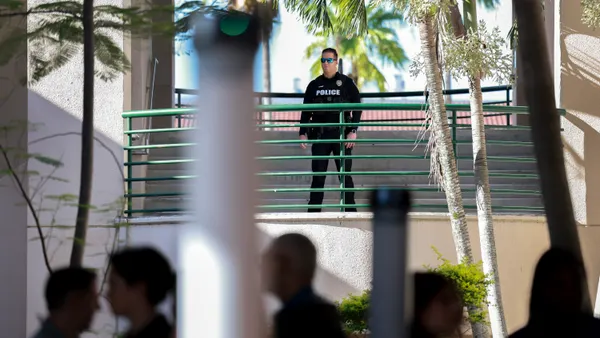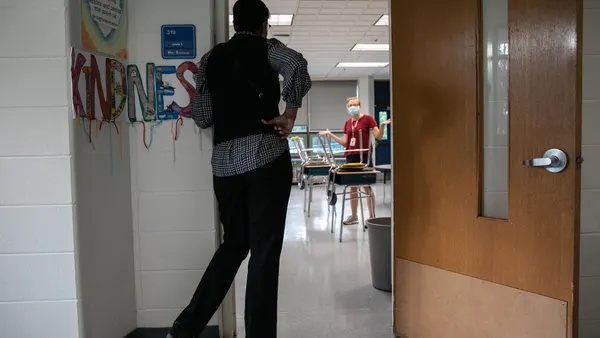Dive Brief:
- A full quarter of superintendents said they will likely leave their position soon, according to a RAND Corp. report on a survey of 359 school district and charter school network leaders conducted between October and December 2021.
- That would be on top of 13% of superintendents who left between the 2020-21 and 2021-22 school years, which the report said reflects normal turnover rates. But among superintendents who left in that period, 17% left districts with a majority of students of color while 12% left majority-white districts.
- Moving forward, the report recommends policymakers monitor superintendent turnover rates, given the effect on a district's functioning and long-term plans for school reform.
Dive Insight:
The findings suggest that superintendents are right in line with teachers and school staff when it comes to seeking a new job or even career because of the looming stress of the pandemic.
Since March 2020, when the pandemic began, 37% of the nation’s 500 largest districts have experienced or are undergoing leadership changes, according to a February report by the ILO Group, a national education strategy and policy firm.
It's not completely clear, however, if superintendents will follow through with their intentions to leave as per the RAND survey, said study co-author Heather Schwartz, director of the pre-K-12 educational systems program and a senior policy researcher at RAND.
“I was not surprised to see that a greater percentage of superintendents say they plan to leave,” Schwartz said. “The question for me is, will they leave?”
Still, Schwartz said she expects to see more superintendent departures before the 2022-23 school year begins, as she’s heard anecdotally these district leaders are waiting for the worst of the pandemic to ease up before they leave.
In an earlier RAND survey, released in February, 75% of district leaders said political polarization over COVID-19 safety and vaccines limited their ability to teach students in the 2021-22 school year. Schwartz said that finding also feeds into a related concern as to why they might plan to leave.
Moreover, 70% of superintendents said their work hours had increased since the pandemic started, the latest RAND survey found.
According to the report, superintendents' average work week of 59 hours before the pandemic shot up to 67 hours during COVID. Schwartz said these long hours are likely contributing to superintendents feeling burnt out.
So what can be done to alleviate the mounting stress that could spur an exodus of superintendents?
Overall, solutions are needed to ease the enormous responsibility of the role and offer “political cover” for superintendents so they’re “not taking so much heat” from divided parents and community members when they have to make significant decisions for their district, Schwartz said.
When there’s high turnover among district leaders, Schwartz said that can create a “flavor of the day approach to education policy generally.”
“Stability is what’s such a key, sorely needed ingredient for schools,” Schwartz said.






 Dive Awards
Dive Awards







